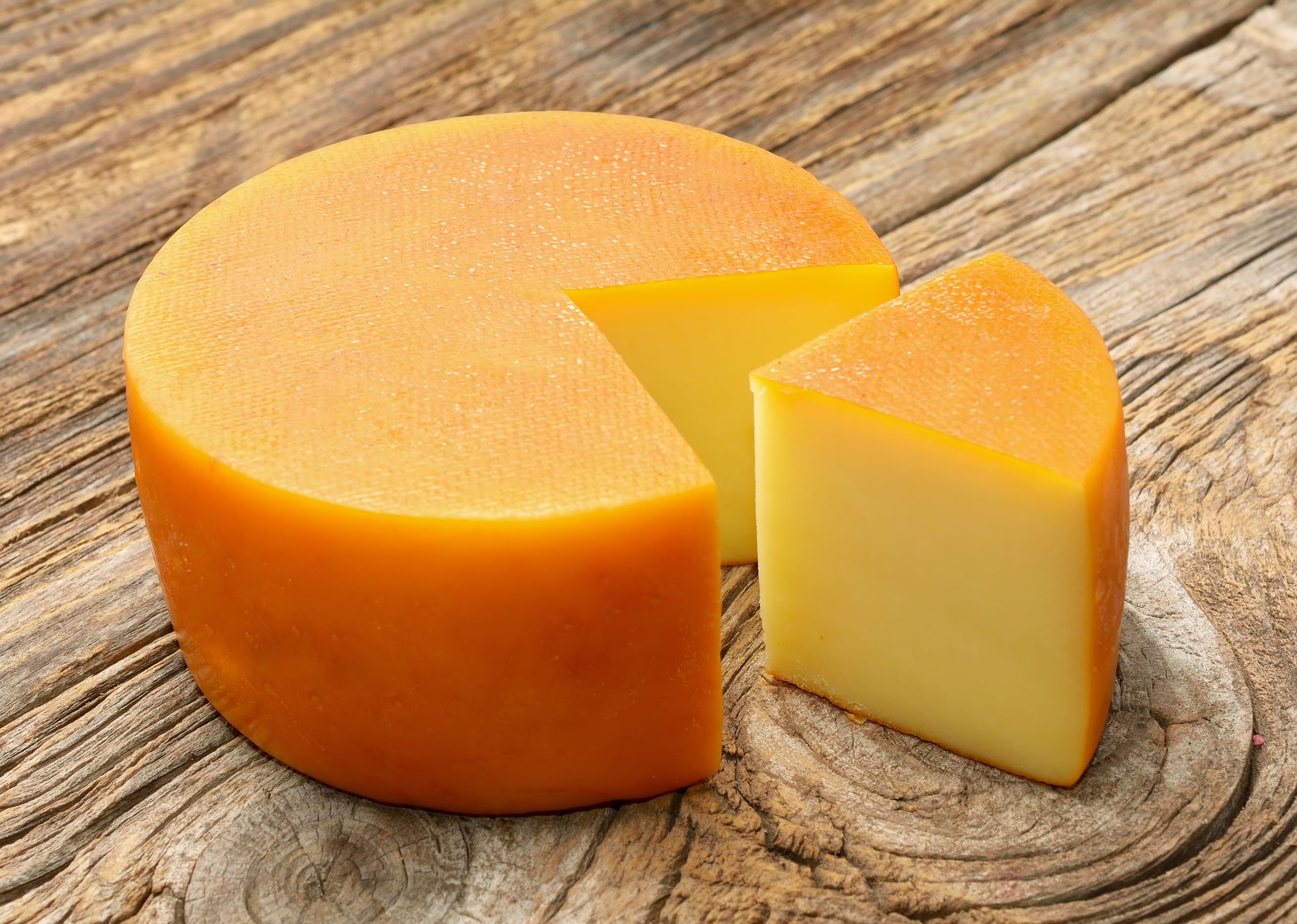
2 gal. of Milk
Ingredients;
Starter Culture: theMilkman™ Gouda Cheese Starter Culture or
Mesophilic Kazu Starter Culture
Calcium Chloride: 1/4 tsp
Veal (or Chymosin) Rennet:
use 1/4 tsp liquid Veal Rennet or 1/16th tsp veal powdered rennet
Inoculation temperature: 86f(30c).
Rennet:(non vegetable) Add calcium chloride prior to adding rennet if using homogenized milk.
Procedure:
- Warm milk to 86f(30c). Sprinkle 1/8th tsp. Starter culture onto milk. Allow 5 minutes for culture to dissolve on the surface of the milk, then stir gently for a few minutes. Allow to ripen for 30 - 45 min at 86F.
- Add rennet (do not use vegetable rennet) and stir gently. Wait for about 45 minutes to get a 'clean break'; wait another 20-30 minutes if necessary
- Cut curds into ½ inch pieces at the beginning of the clean break. Stir curds until they sink to the bottom of the vat, about 10 minutes, longer for higher fat milk. Add hot water slowly 176f(80c) to the vat; watch temp as it will rise.
- Stir gently for 10 minutes. The temperature should stabilize at 93f(33.8c), no higher than 94f. Allow curds to settle to bottom of vat for 10 minutes.
- Remove another 1/3 of the whey replacing it slowly with the hot water heating to 100f(37c). Stir the curds to keep them from matting. Allow the curds to sit in the vat for another 20 minutes, stirring only to keep them from matting. The temperature should stabilize at 99-100f(37c.
- Drain about 10-20% off the whey off the curds. With more room in the vat, place your sanitized hoop or mould in the vat, pushing aside any curds.
- Place the curds into the hoop/mould while it’s in the whey.
- Once all the curds are in the mould/hoop gently press down on the curd mass using your hands. Pour warm whey from the vat onto the curds 3-4 times, allowing the whey to move through the curds. Make sure the curds are evenly spread into the hoop/mould.
- Take the filled hoop/mould out of the vat and allow the whey to drain naturally for an hour or until the draining decreases.
- Dress in 50 or 60 grade cheese cloth and apply a light pressing(20lbs of weight) for another hour per side. Press again for one hour per side at a heavier pressing (40lbs of weight). Brine in heavy brine** for 12 hours for every 5 lbs (2.2 kg) of cheese; for this smaller 2 gallon cheese brine for 8 hrs.
- Allow to air dry at room temperature until rind is dry. Use a small fan to dry the cheese faster. Use cream wax*(which includes mold inhibitor Natamax) and/or hard wax. Age at 50-55f(10-12.7c)/75-80% rH for two-three months.
- Age on pine wood, bamboo or plastic matting and turn over daily for at least one week. Brush with light cloth if any unwanted mold appears. A solution of white vinegar and salt can also be used.
**Heavy Brine: 2 lbs.(900 grams) of non-iodized salt to one gallon of clean pre-boiled/cooled water. Use Salometer*** to achieve a salt concentration of 20-23° Baumè(1.148-1.169) Specific Gravity or 25% saturation.
Use a little white vinegar, 1 tsp.(4.9ml) or ½ tsp.citric acid and 1 tbs.(14.7ml) liquid calcium chloride to bring the pH(test with pH strips of pH meter)
of the brine to 5.4-5.2.
***Using a Salometer you will want to add salt to water until the scale reaches 75. This will give you a 25% salt saturation. Adding herbs or seeds to your Gouda: You will want to use safe culinary herbs, seeds or spices. Add those items when you hoop the curds. The curds should be well drained. Use an appropriate amount (maybe less the first time so not to overwhelm the cheese itself). If using Fenugreek seeds, boil the seeds for 10 minutes, then place them in cool water for at least 24 hours before adding to the well drained curds during hooping.
Enjoy.
–The CheeseMaker

